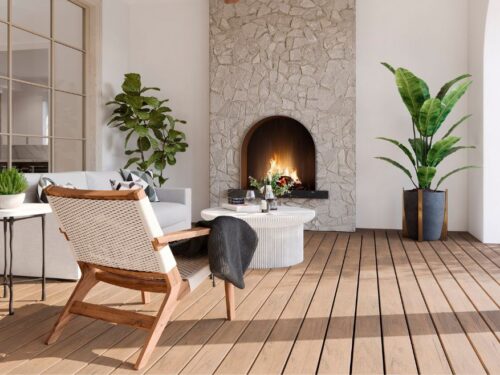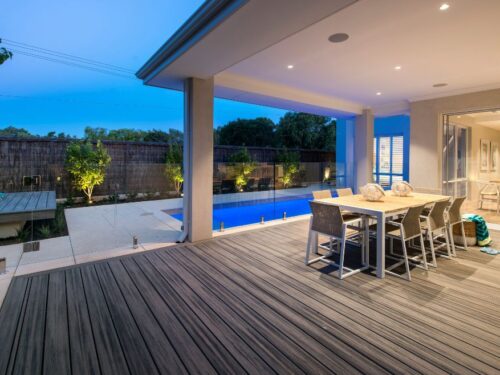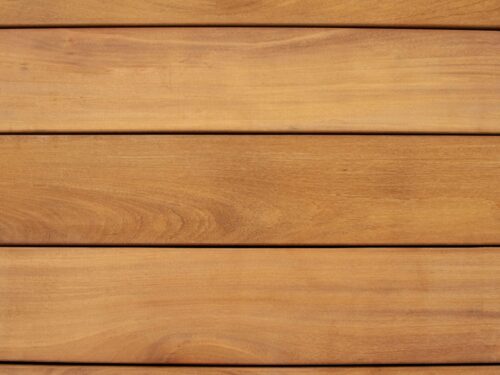Australian Hardwood Decking
Decking is extremely versatile; it can be used in designs for seating, boxed storage, garden screens, outdoor furniture, raised garden beds, gates, fences and privacy screens.
At Hurford’s, we manufacture and stock high-quality, kiln dried hardwood decking and screening. Our range includes Australian and Imported hardwoods, such as spotted gum and ironbark decking, as well as a range of treated and naturally termite-resistant softwoods.
Huford’s can accomodate all of your decking ideas with a vast range of sizes and species available.

Hurford’s Organic Decking range is free of sapwood, eliminating the application of chemical treatment, providing a safe, healthy and non-toxic decking option.
Chemical treating of decking focuses on protecting the sapwood portion of the timber board from insect attack and fungal decay. It is not possible to effectively treat heartwood, as heartwood cells contain special tannins, oils, resins and other extractives that prevent the uptake of wood preservative chemicals.
Hurford’s have spent the time to grade out timber boards that contain sapwood so no chemical treatment is required.
The timber species selected for Hurford’s Organic Decking range all have the highest Natural Durability rating of Class 1 above ground, so you can be sure your decking is going to last a long time.
Technical Information & Brochure Downloads:
Natural Hardwood Decking Brochure
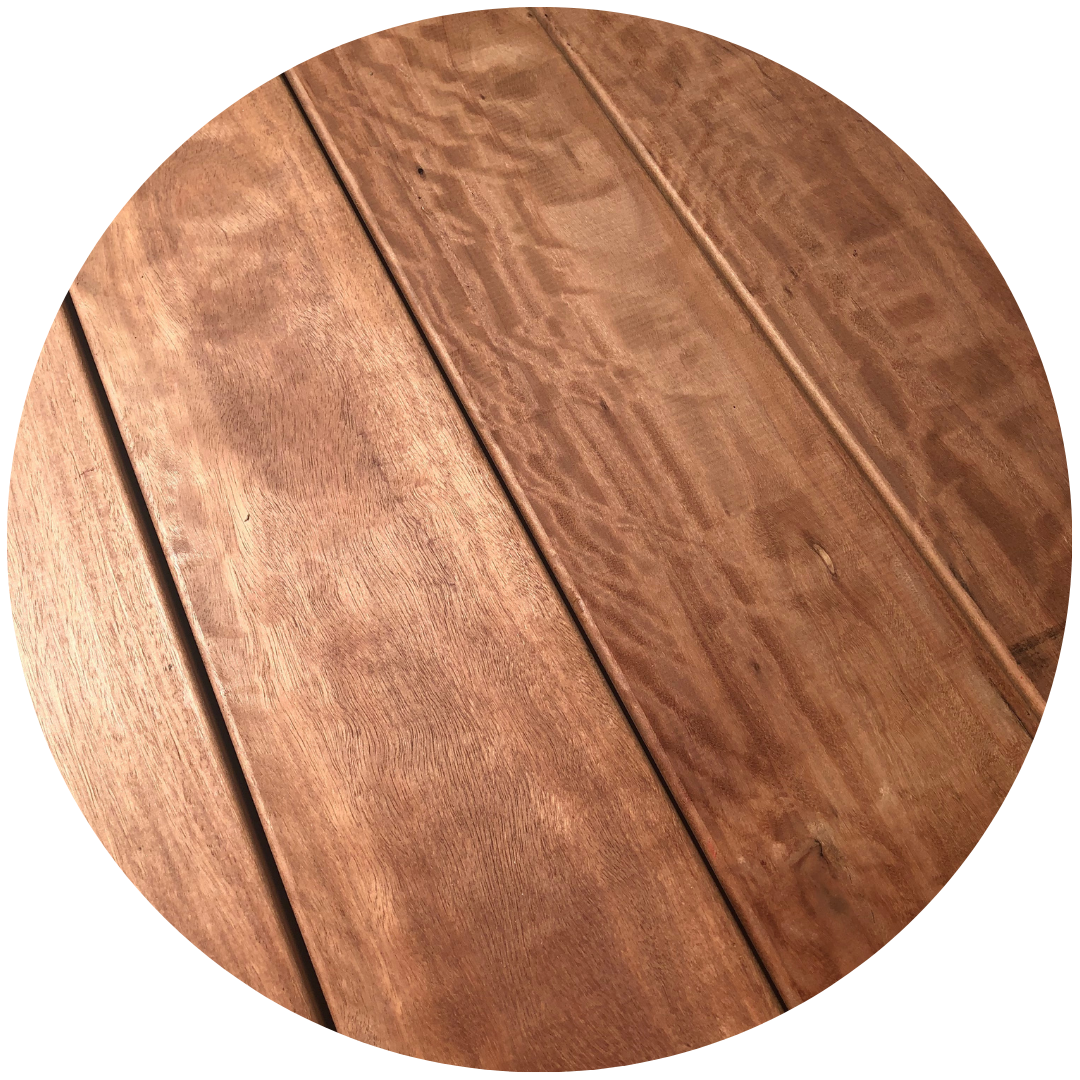
Species: Ironbark, Eucalyptus paniculata / sideroxylon
Hardness Rating: Janka 14
Colour: Heartwood colour varies from pale brown to dark chocolate brown and also dark red.
Bush Fire Rating: BAL19
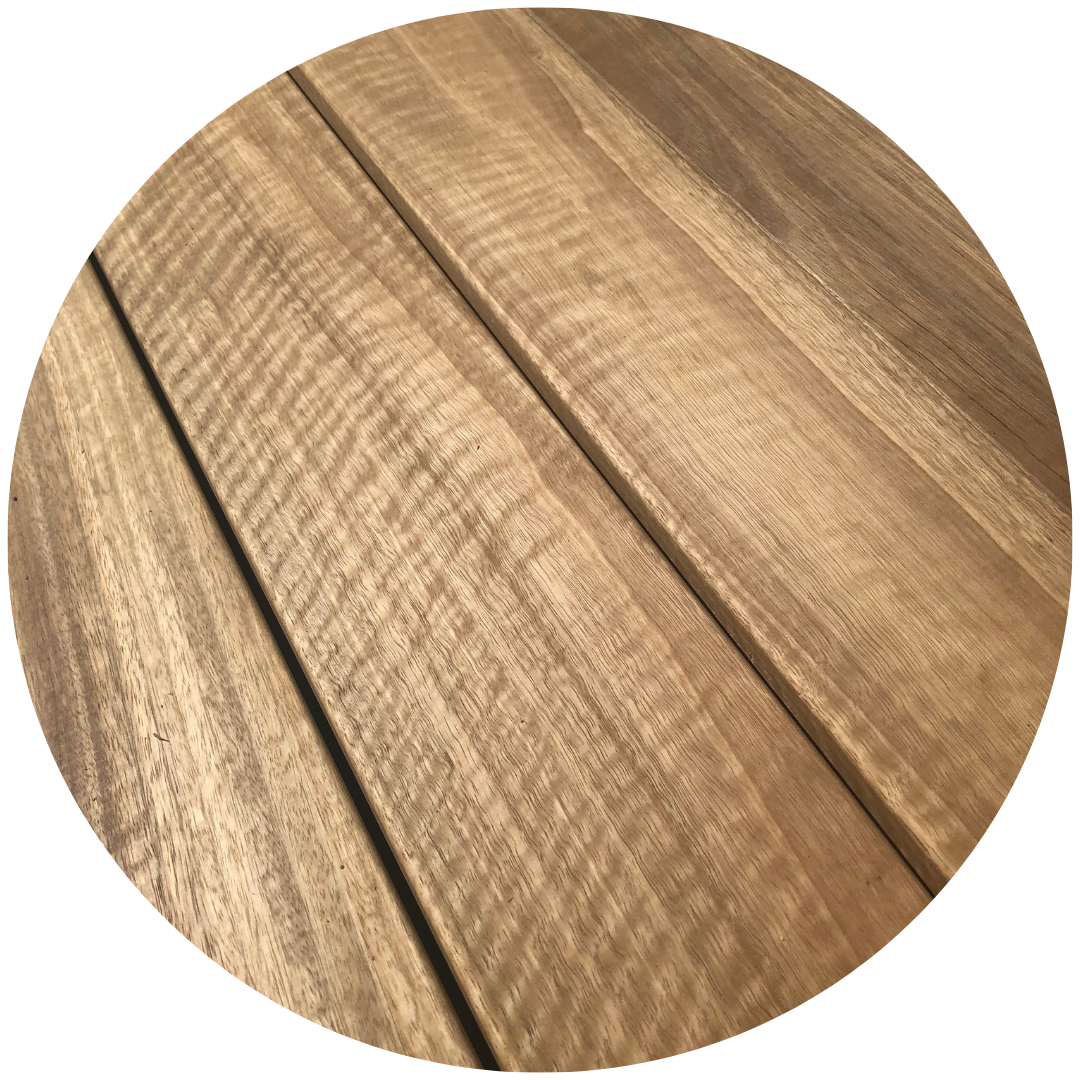
Australian Hardwood
Species: Spotted Gum (QLD), Corymbia citriodora
Hardness Rating: Janka 11
Colour: Heartwood pale to dark brown to dark chocolate with some reddish tinges.
Bush Fire Rating: BAL29

Australian Hardwood
Species: Spotted Gum (NSW), Corymbia maculata
Hardness Rating: Janka 11
Colour: Heartwood pale to dark brown to dark chocolate with some olive green to reddish tinges.
Bush Fire Rating: BAL29
Maintenance
NZ has a very high UV rating, causing any timber left uncoated to turn a weathered silvery grey. This is due to the UV rays slowly degrading the timbers surface and cellulose fibres in the timber, which in turn changes the natural colour. For minimal maintenance consider allowing your deck to weather naturally.
Greying only affects the surface of the timber, so if you decide a change in appearance is needed; then the timber can be rejuvenated and finished to your new desired effect.
To maintain the timbers natural colour or to transform the timbers appearance, an external timber coating needs to be applied and maintained in accordance with the manufacturer’s recommendations.
Reducing the time spent maintaining your deck can depend of the type of finish that’s applied, the degree of sun exposure, and the amount of additional protection it has from the weather. Your expected outcome will determine the level of maintenance required.
Considerations
Timber movement – Timber is a hygroscopic product, which means that it will absorb or lose moisture depending on the environment it is placed in. When timber is placed in a high humidity (moist) environment it absorbs moisture and expands, oppositely when timber is placed in a low humidity (dry) environment it sheds moisture and shrinks.
Leaching – Leaching of tannins occur when timber is exposed to rain which may cause staining on surfaces in contact with the decking. Directing water runoff, preparing timber prior to installation and maintaining the finish will help reduce any potential leaching. The stain is cosmetic only and will not corrode or rot surfaces it comes in contact with. Tip: Feast Watson WOOCLEAN helps to remove oils and tannins from new timber and rejuvenates grey, weathered timber.
Finishes – To preserve the natural look of the timber decking it will need to be finished. Applying a penetrating oil based finish will enhance and preserve the natural beauty of the timber, and help keep the timber nourished and hydrated. A finish helps protect from moisture, UV radiation and fungi, reducing timber movement, checking, bleaching, and mould. Unpigmented finishes including clean film finishes have limited life when exposed to UV-light, prone to trapping moisture peeling and greying faster. Transforming the timbers colour can be achieved by using a stain to finish. Tip: The Feast Watson consumer page will help answer questions you have regarding differences between oils and stains.
Grades
SELECT
The select grade denotes a minimal degree of natural feature in the boards. As a naturally occurring product, all timber decking contains some degree of feature such as pinhole, gum vein and surface check.
STANDARD & BETTER
Combines the features of select & standard grade to provide a deck with slightly more character than a select grade timber.
FEATURE
Feature grade is, as the name suggests, high feature. Each board is a veritable sea of natural feature, containing large knots, gum veins, pinholes and even some holes that can be filled during the laying process. Again, the features will be greater in quantity and larger in size than standard grade.
Variations in Timber
Timber is a spectacular and versatile natural material. It yields a vast degree of variety in colour, texture and naturally occurring feature. This diversity can be apparent even between pieces selected from batches of the same species. Finishing can also effect variation in colour and may even highlight subsurface feature.
Hurford Wholesale recommends that care be taken when making a preference selection based on a single sample piece or a small area sample. In all cases, timber decking supplied will deviate in appearance between jobs and display samples. However, it is this deviation that makes every timber deck absolutely unique.
NOTE: Not all species are available in all sizes and grades. Please confirm availability before specifying or ordering.
Species
| Blackbutt | Karri | Kwila (Merbau) | |
| Brushbox | Mixed Hardwood | Radiata | |
| Blue Gum | Qld Spotted Gum | Teak | |
| Cypress | Red Ironbark | Vitex | |
| Grey Box | Spotted Gum | Jarrah | |
| Grey Ironbark | Silver Ash | Tallowwood | |
| Grey Gum | Stringybark, Yellow | Garapa | |
| Ironbark | Turpentine | ||








